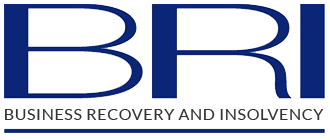The Autumn 2024 Budget changes
Prior to the budget being delivered on 30 October, changes to Capital Gains Tax (CGT) and Business Asset Disposal Relief (BADR), formerly known as Entrepreneur’s Relief, were anticipated. Unsurprisingly, both predictions turned out to be correct, with changes to CGT implemented immediately and BADR rates to change as of 6 April 2025.
Changes to Capital Gains Tax rates and Business Asset Disposal Relief
The table below summarises the budget amendments to CGT rates and BADR.
|
Tax type |
30 October 2024 |
6 April 2025 |
6 April 2026 |
|
Capital Gains Tax Rate |
Lower 18% Higher 24% |
Lower 18% Higher 24% |
Lower 18% Higher 24% |
|
Business Asset Disposal Relief |
10% |
14% |
18% |
Please note that the, already greatly reduced, annual capital gains exemption of £3,000 will remain.
No amendments have been made to the lifetime limit of £1,000,000 for BADR i.e. an individual can receive up to £1,000,000 of qualifying gains to which BADR relief applies, anything in excess of that falls to CGT rates.
When closing a business, for members to benefit from BADR relating to a distribution of a company’s assets, a formal liquidation of the company is required, unless the asset value is less than or equivalent to £25,000, in which case the relief can be obtained following a strike off of the company.
Members’ Voluntary Liquidation
A members’ voluntary liquidation (MVL) is a popular choice for directors and members of solvent businesses when they wish to wind-up and close a company. Once the business has entered an MVL – with an insolvency practitioner appointed as liquidator – the assets of the business can be distributed to members who are then subject to capital taxes such as CGT and BADR rather than income taxes.
Please note that there are conditions relating to when BADR is applicable therefore professional tax advice should be obtained when considering an MVL.
A comparison of how the Autumn Budget BADR changes may impact you in an MVL
Scenario – you are a sole director and shareholder of a business and receipt of the annual accounts shows you that the accumulated reserves have now reached £250,000. With an exit or retirement in mind, your tax advisor has suggested that you speak with an insolvency practitioner to explore an MVL. Whilst any tax and net returns are for your tax advisor to confirm with you, a simple example is provided below based on the current and future BADR tax rates.
The table below compares the return to the shareholder in each tax period assuming that BADR is available and the annual exemption of £3,000 applies.
|
Date funds distributed from |
Funds to distribute |
Tax* |
Net return to shareholder |
Extra tax incurred |
|
30 October 2024 |
250,000 |
24,700 |
225,300 |
n/a |
|
6 April 2025 |
250,000 |
34,580 |
215,420 |
£9,880 |
|
6 April 2026 |
250,000 |
44,460 |
205,540 |
£19,760** |
* The liquidator pays the gross amount to the shareholder and the shareholder is required to declare and pay any personal tax themselves
** Compared to the 2024 figure
BRI Business Recovery and Insolvency are licensed insolvency practitioners and not tax advisors. Independent tax advice must be sought and the above is a generic example and not to be relied upon as tax advice.
If an MVL is right for you…
If your tax advisor has recommended that you speak with an insolvency practitioner to consider an MVL, please do get in touch with any of our BRI Business Recovery and Insolvency offices and our experienced team will be happy to talk through your specific circumstances to understand if an MVL is suitable.
For a free, no obligation and confidential chat please feel free to reach out to us on 01908 317387.
